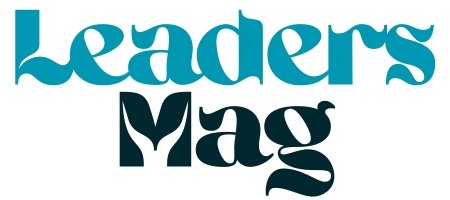Tenant application software is a vital tool for modern landlords, streamlining the process of screening and selecting tenants to ensure the best fit for rental properties. These platforms digitize the application process, allowing prospective tenants to submit information online, while landlords access tools for background checks, credit reports, and lease management. By automating these tasks, tenant application software saves time, reduces errors, and enhances decision-making, enabling property managers to fill vacancies quickly and efficiently in a competitive rental market.
The Evolution of Tenant Screening
The tenant screening process has evolved significantly from the days of paper applications and manual reference checks. Historically, landlords collected physical forms, contacted employers, and ran credit checks through third-party agencies, a time-consuming and error-prone process. The advent of digital solutions transformed this landscape, with tenant application software emerging as a centralized platform for managing applications. These tools allow tenants to submit applications online, upload supporting documents like pay stubs, and consent to background checks, all from their devices.
This digital shift has been driven by the need for efficiency and accuracy. Manual screening could take days or even weeks, delaying move-ins and costing landlords revenue. Software like DoorLoop and TurboTenant enables applications to be processed in hours, with automated checks providing instant insights into credit, criminal history, and eviction records. The integration of these platforms with listing sites like Zillow further accelerates the process by attracting more applicants, with TenantCloud reporting an average of four applications per listing.
Core Features of Tenant Application Software
Tenant application software offers a suite of features designed to simplify the leasing process. Online application portals are at the heart of these platforms, allowing tenants to complete forms with details like employment history, rental references, and personal information. These portals are customizable, enabling landlords to add specific questions or disclosures to meet local regulations or property needs. For example, RentPost allows landlords to tailor applications to include pet policies or income requirements.
Background and credit screening is another critical component. Platforms partner with providers like TransUnion to deliver comprehensive reports, including credit scores, criminal records, and eviction histories. RentPost’s Premium report, for instance, includes enhanced identity verification, ensuring landlords have accurate data to make informed decisions. These checks are often completed in minutes, providing a significant time advantage over manual processes.
Lease management features streamline the transition from application to tenancy. Once an applicant is approved, software like Hemlane enables electronic lease creation and e-signing, eliminating the need for paper documents. Integration with payment systems allows security deposits to be collected during onboarding, ensuring a seamless process. Additionally, many platforms offer tenant portals where applicants can track their application status, fostering transparency and reducing communication overhead.
Benefits for Landlords and Tenants
The adoption of tenant application software delivers significant advantages for both landlords and tenants. For landlords, the primary benefit is time savings. Automated screening reduces the effort required to vet applicants, with platforms like DoorLoop handling background checks in a few clicks. This efficiency is critical for large portfolios, where manual screening could overwhelm property managers. Studies suggest that automation can cut screening time by up to 70%, allowing landlords to fill vacancies faster and minimize revenue loss.
Accuracy is another key benefit. Manual checks are prone to errors, such as missing an eviction record or misinterpreting credit data. Software ensures consistency by using standardized reports from trusted sources, reducing the risk of selecting problematic tenants. Platforms like Stessa claim their screening process reduces tenant default rates by up to 25%, saving landlords the cost and hassle of evictions.
Tenants benefit from a streamlined application process. Online portals eliminate the need for in-person visits or mailing documents, making it easier for applicants to apply from anywhere. The transparency of tracking application status, as offered by TenantCloud, reduces anxiety and builds trust. Additionally, features like e-signing and document storage simplify move-in logistics, enhancing the tenant experience.
Leading Tenant Application Software Platforms
Several platforms stand out in the tenant application software market. DoorLoop is a comprehensive solution, offering tools for application collection, screening, and lease signing, with integrations for listing sites to attract applicants. Its intuitive interface and human support make it a favorite for growing property managers. TurboTenant provides a free platform with robust screening features, including TransUnion reports and listing syndication, making it ideal for small landlords.
TenantCloud excels in automation, offering application collection, background checks, and lease management in one platform. Its integration with sites like Apartments.com ensures high visibility for listings. RentPost offers customizable applications and two tiers of screening reports, catering to landlords with specific needs. Hemlane adds value with tenant placement services, helping landlords find qualified tenants in under 19 days through guided tours and in-depth screening.
Security and Compliance in Tenant Screening
Security is a top priority in tenant application software, given the sensitive nature of personal and financial data. Platforms use encryption to protect information during transmission and storage, with many adhering to standards like GDPR and CCPA. Role-based access controls ensure only authorized users can view applicant data, while audit logs provide accountability. Rentec Direct, for example, offers secure document storage and sharing, protecting leases and screening reports.
Compliance with fair housing laws is critical. Software ensures that screening processes are standardized, reducing the risk of discriminatory practices. Automated reports provide objective data, helping landlords make fair decisions. Platforms like RentPost include features to document compliance, such as consent forms for background checks, ensuring adherence to regulations.
Choosing the Right Tenant Application Software
Selecting the right software requires evaluating several factors. First, consider the scope of features. If listing syndication is a priority, platforms like TenantCloud or TurboTenant are strong choices. For landlords needing comprehensive management, DoorLoop’s all-in-one approach is ideal. Cost is another factor; TurboTenant’s free plan appeals to budget-conscious landlords, while RentPost’s subscription model suits those needing advanced features.
Ease of use is crucial, especially for small landlords with limited technical expertise. Avail’s user-friendly interface makes it accessible, while Rentec Direct’s unlimited support ensures quick issue resolution. Integration with payment and accounting systems, as offered by Stessa, streamlines financial management. Finally, consider scalability. Platforms like DoorLoop support portfolios of any size, making them suitable for both small and large property managers.
Challenges and Solutions in Adoption
Adoption challenges include tenant resistance to digital processes, particularly among those unfamiliar with technology. Landlords can address this by offering tutorials or in-person guidance. Technical issues, such as integration with legacy systems, can be mitigated by choosing platforms with open APIs, like RentPost. Cost concerns for large portfolios can be alleviated by selecting software with flat-rate pricing or free plans.
Another challenge is ensuring data accuracy. While automated screening is reliable, landlords must verify applicant consent and data integrity. Platforms like Hemlane include verification steps to ensure compliance. Training property managers on software features is also critical, with platforms like DoorLoop offering demos to ease onboarding.
Future Trends in Tenant Application Software
The future of tenant application software is shaped by emerging technologies. Artificial intelligence will enhance screening by predicting tenant reliability based on behavioral patterns. Blockchain could secure applicant data, creating immutable records for transparency. Integration with virtual tour platforms will streamline the application process, allowing tenants to view properties remotely before applying.
Sustainability is an emerging focus, with paperless applications reducing environmental impact. Enhanced analytics will provide landlords with insights into applicant trends, optimizing tenant selection. These advancements will make tenant application software even more integral to property management.
Success Stories and Real-World Impact
Landlords using tenant application software report significant improvements. A small landlord using TurboTenant filled vacancies in under a week, thanks to its listing syndication and screening tools. A large property management firm using DoorLoop streamlined applications for 1,000 units, reducing administrative time by 60%. Tenants appreciate the ease of online applications, with one TenantCloud user noting the ability to apply from another state as a game-changer.
These stories highlight the software’s ability to save time, improve tenant quality, and enhance the leasing experience, making it a must-have for modern landlords.
Conclusion: Transforming Tenant Selection
Tenant application software is revolutionizing how landlords select tenants, offering efficiency, accuracy, and convenience. By automating screening, integrating with leasing tools, and ensuring compliance, these platforms empower property managers to build thriving rental communities. As technology advances, adopting these solutions will be key to staying competitive in the rental market.
YOU MAY ALSO LIKE: Innovative Applications of Specialty Steel in Modern Construction











